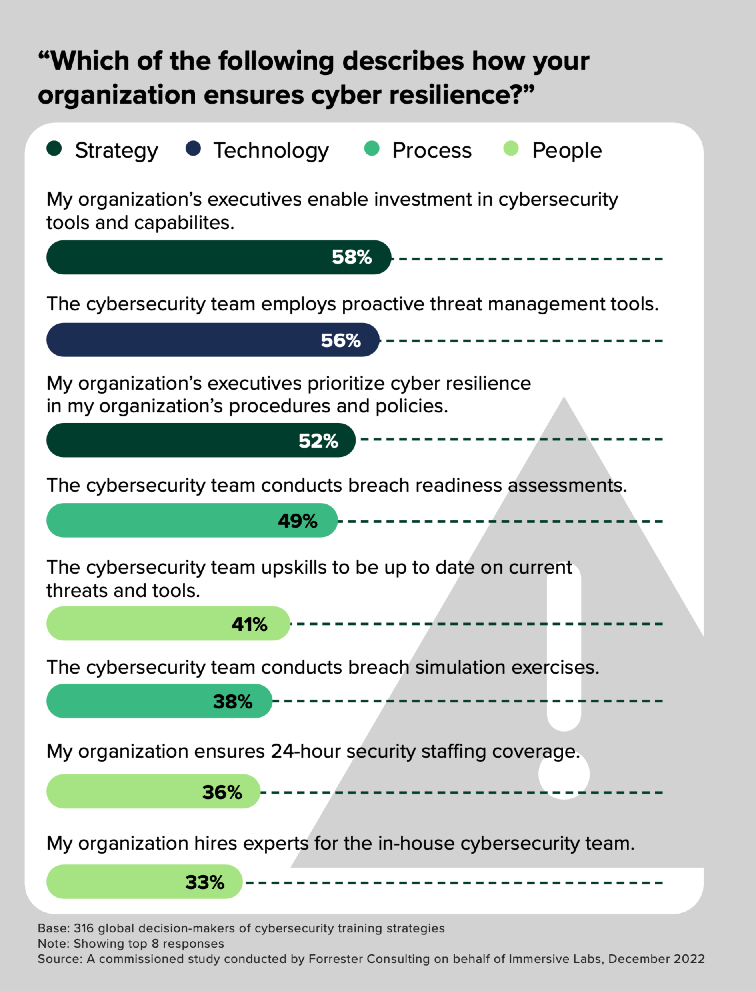Less than one third of leaders believe their organization has a formal strategy to achieve cyber resilience.
Despite this lack of preparation, organizations around the world spend over $150 billion annually on cybersecurity.
With numbers like these, it is increasingly evident that investing in cybersecurity tools is not enough.
A recent Forrester Consulting study commissioned by Immersive Labs found that the main challenge facing cyber resilience is insufficient security expertise.The key takeaway for leaders? Invest in your people and their cyber skills.

Prioritize potential
When hiring, don’t be afraid to prioritize potential over credentials. Existing hiring practices often overlook individuals with the aptitude to thrive in cybersecurity roles, as they frequently don’t have the proper certifications. This exclusionary process can create a barrier-to-entry for many job seekers and limit diversification of talent.
By creating hiring processes that value aptitude and provable cyber capabilities, leaders can fill currently vacant roles with talented individuals, while simultaneously increasing diversity across teams. Ultimately, this approach enables organizations to nurture talent from entry-level to leadership, creating a more committed workforce in the process.

Provide hands-on, active learning
Provide the people you do employ opportunities to learn new skills or sharpen their processes – and prioritize training with immediate, lasting impact. Expensive, classroom-based learning is only relevant for a finite amount of time. In addition to a short shelf life, this kind of cybersecurity training is often dull, dry, and inaccessible, resulting in a lack of participation. Access to training needs to be as close to seamless as possible – especially for security teams already stretched thin with their normal day-to-day activities.
Instead, adopt hands-on, continuous exercising through easy access to on-demand real-life cyber simulations. By providing employees with dynamic, immersive threat scenarios, organizations support skills development and growth. Additionally, given that the likelihood of a cyber breach is when, not if, hands-on learning enables individuals and teams to gain the confidence they need to confront a threat when it matters most.
Rethink upskilling
This dynamic approach to hands-on learning must also be replicated in upskilling strategies. In fact, over 64% of leaders state that traditional upskilling methods like video training and certifications are ineffective for building resilience.
With on-demand, online cyber skills content, employees gain hands-on experience with tools, technology, and techniques that help them build and hone their skills in an ever-changing threat landscape. By enabling the constant adaptation required to be effective in cybersecurity, proactive, interactive upskilling can uplevel employees to ensure that the next breach is blocked.
To learn more about Forrester’s findings, read the full report here.


